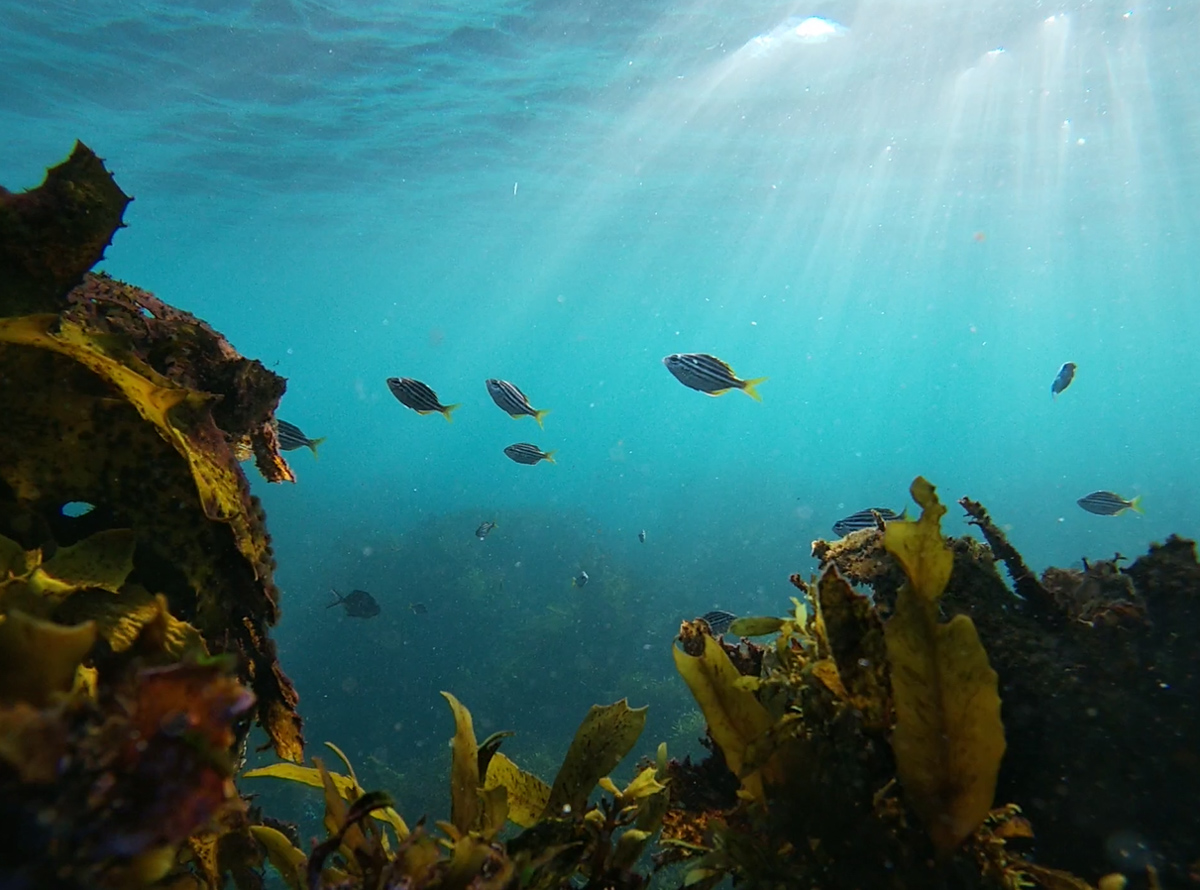Media release
From:
As the world’s oceans warm, tropical fish species are moving into cooler waters and exploring new habitats beyond their traditional ranges. Researchers have discovered a new way to track their migration patterns by combining environmental DNA with visual surveys.
“Climate change has already caused more than 12,000 species to shift their homes across land, freshwater and the sea,” says the University of Adelaide’s Dr Chloe Hayes, who has published a study on the new approach.
“In the ocean, we have seen some tropical fish move into temperate reefs to seek cooler waters, particularly along the east coast of Australia, which is considered one of the fastest warming marine regions on Earth.”
Study co-author Professor David Booth, from the University of Technology Sydney, says the migrations are already evident.
“New coral and fish species arrive in Sydney's oceans every year, and this is expected to increase with future climate change,” he says.
Researchers have traditionally relied upon visual surveys to monitor these migrations, but that alone does not capture the full picture.
“Many of the early-arrival species are small, rare, or cryptic, so they can be easily missed. As a result, we may be underestimating the true rate of species on the move,” says co-author Dr Angus Mitchell, from the University of Adelaide.
To help fill the potential knowledge gaps, Dr Hayes took inspiration from forensic science.
“Every organism leaves behind traces of itself in its environment – fish shed mucus, scales and waste, all of which contain DNA. By collecting and filtering samples of seawater, we can extract this DNA and identify the species that have lived in a particular area,” says Dr Hayes, whose study was published in Diversity and Distributions.
Project leader Professor Ivan Nagelkerken, from the University of Adelaide, says the data improves knowledge of our oceans.
“Just as detectives solve crimes by analysing fingerprints or hair left at a scene, ecologists can build a picture of marine life from the genetic fingerprints floating invisibly in the ocean,” he says.
To test how well eDNA can reveal species on the move, the study’s team members surveyed fish communities along 2,000 kilometres of Australia's east coast, from the tropical reefs of the Great Barrier Reef to the temperate kelp forests of New South Wales.
“When we compared traditional visual surveys with eDNA water samples, the results were interesting. Each method revealed a somewhat different fish community, but together gave us a more complete picture than either method could on its own,” Dr Hayes says.
“eDNA detected tropical species in temperate ecosystems that had never been recorded there before, such as the lined surgeonfish, the striated surgeonfish, and the common parrotfish, as well as cryptic species like the black-blotched porcupinefish, the silver sweeper, and the speckled squirrelfish, which hide in caves or only emerge at night. These are exactly the kinds of fish that divers are most likely to miss.”
For temperate species, researchers were often better at detecting them with visual surveys than through eDNA, but the two combined still produced greater results.
“By combining the two methods, we can better track species on the move, giving us the clearest view yet of how climate change is reshaping our reefs,” Dr Hayes says.



 Australia; NSW; SA
Australia; NSW; SA


